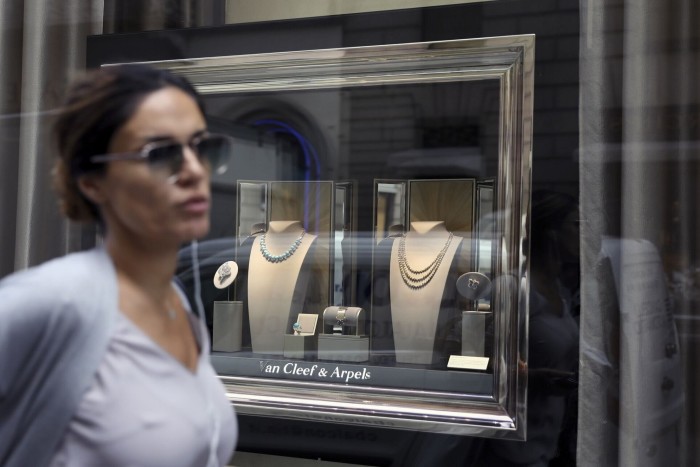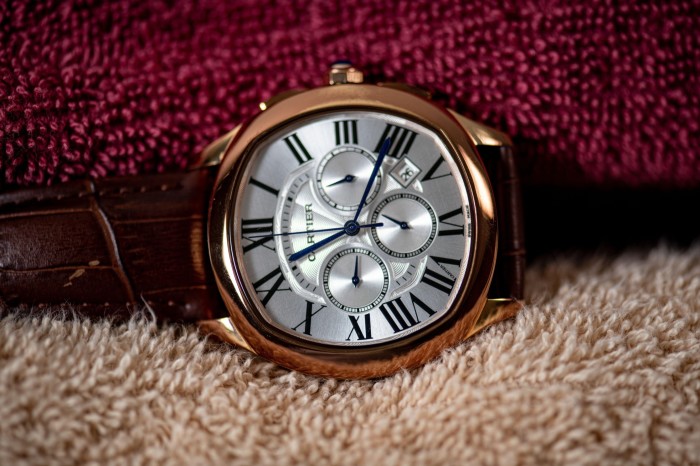
When Richemont chair Johann Rupert first approached Nicolas Bos about becoming chief executive of the Swiss luxury group he controls, he was rebuffed.
Bos, the chief executive and creative director of Van Cleef & Arpels, did not yet want to change roles after a strong run at the Richemont-owned jeweller.
“When I first forced Nicolas to consider it, which was quite a while ago, he was having so much fun growing [Van Cleef] that he actually declined the offer, which I found very nice,” Rupert, a South African billionaire and the group’s controlling shareholder, told reporters in May.
“That’s the kind of person you want, somebody who doesn’t want to have all the power.”
That changed this month when the Geneva-based group announced it would overhaul the chief executive role, giving the occupier more power and oversight over all the group’s brands. Bos was named to the newly expanded position, starting on June 1, while current chief executive Jérôme Lambert will become chief operating officer.
Bos, a Frenchman who is well-liked by colleagues and who has spent his whole career at Richemont, takes on the job at a challenging moment for the industry. Luxury growth is slowing from a pandemic-era boom, the outlook for the key Chinese market remains dim and questions about longer-term succession at Richemont persist.
Up until now, most decision-making at the group — which also owns high-end jeweller Cartier, watchmaker Piaget and fashion brands such as Chloé — runs through Rupert, the group’s chair, with Lambert as chief executive at his side overseeing the group’s smaller brands. Van Cleef and Cartier, the group’s biggest brand by sales and profits, as well as finance, reported directly to Rupert.

The 73-year-old remains highly involved in the group’s management and operations, but has no clear successor among his three children and has yet to anoint an executive. Many of the most important players in luxury, from LVMH to Prada, are also grappling with questions of succession.
The appointment of Bos, 53, goes at least some way towards giving investors an indication of what a generational handover at Richemont could look like. Bos will take on some of Rupert’s day-to-day management duties although the chair has said he has no intention of taking a step back.
“The question of succession planning is not as relevant as it was a few weeks ago . . . because now you have someone capable who is going to run the group,” said Erwan Rambourg, analyst at HSBC. “That provides a lot of relief because in many of the conversations we’ve had with investors, they were asking: what’s next, what’s after Rupert . . . You’ve just bought yourself quite a bit of time.”
Bos’ promotion was warmly received by investors, with shares rising 6 per cent, extending their gains to 27 per cent so far this year.
“[He] looks younger and is dynamic, he talks the talk. People like him and he’s clearly highly competent,” said one investor. But they added: “Though it doesn’t entirely deal with the succession issue.”
Richemont was founded in 1988 by Rupert through a spin-off from the South African group started by his father, Anton, that spanned industries ranging from tobacco to financial services, mining and luxury goods. The new Switzerland-based group held the family’s non-South African assets, which included minority stakes in luxury brands including Cartier, Piaget and Baume & Mercier.

Rupert built the group via a series of deals including taking a controlling stake in Cartier in 1993, buying Vacheron Constantin, one of the world’s oldest watchmakers, in 1996 and taking over Van Cleef in 1999.
The group grew from having net profits of £106.5mn in its first year of operations to €2.35bn last year, and a market capitalisation of SFr76.4bn ($84.2bn).
As Bos assumes his new role, his expertise in jewellery — the group’s biggest division by sales — will be an asset. Richemont’s jewellery sales have held up, continuing to grow despite industry-wide softening.
However, he will have to contend with a weaker China, while sales of the group’s high-end watches fell at the end of last year.
Richemont also needs a solution to the thorny issue of its lossmaking ecommerce business Yoox Net-a-Porter, for which it is trying to find a buyer. He will also eventually have to manage the succession at Cartier as chief executive Cyrille Vigneron approaches retirement.
A Paris native with a passion for the performing arts and literature, Bos joined the Cartier Foundation — a contemporary arts museum in Paris founded by the group — in 1992 after graduating from France’s ESSEC business school.
In his interview to get into business school, he used the Foundation as an example of the kinds of enterprises he was interested in working for. “I was interested in companies that mixed business with culture,” he told an alumni magazine in 2016. “Actually I think this is what got me in!”
Richemont and Bos declined to comment for this article.
Bos spent the next decade working between the Foundation and Cartier, the company, coordinating the company’s partnerships in the arts. After Richemont took over Van Cleef, Bos went there to help turn around the legendary but lossmaking Parisian jewellery house.
He moved from roles in marketing and communications to product development, eventually being appointed creative director for all collections and regional director for the Americas, overseeing the sector’s biggest market. In 2013, he was named chief executive, unusually also retaining his creative director functions. Since 2019 he has also overseen jewellery house Buccellati.
“Nicolas is pretty much the only CEO in the sector [to have that] left and right brain ability in terms of being creative and at the same time being a merchant. That’s incredibly rare,” said Rambourg.
“You would be having conversations on the organisation, profitability or corporate structure, then he could then turn to talking about a new high jewellery collection and references that inspired him,” said jewellery designer and former Van Cleef & Arpels employee Briony Raymond. “It’s a unique set of skills.”
Turning Van Cleef around was not an overnight project. It took about a decade after the Richemont deal for the jeweller to become profitable again in a process that has gathered pace under Bos.
Bos’ enthusiasm for and knowledge of the arts was a good fit for the brand while the push into China he oversaw has helped propel growth. The brand now has more than 30 stores in cities around the country.
“To me, the key for a proper chief executive must be that person needs to be a successful executive from the marketing, client-facing side,” Rupert said when announcing the new role. “Nicolas has proven himself in operating Van Cleef and building it into a proper powerhouse.”
Ultimately the hope is that Bos’ new role will bring a more traditional structure, as well as sparkle, to Richemont’s upper echelons.
Having top brands and the chief financial officer report to the main shareholder “was not healthy”, said Rambourg, and “must have led to some inconsistencies. This should make it easier . . . It’s not rocket science and should have been that way in the first place.”

